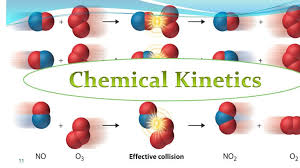- Teacher: هبه الله عزت هاشم فوزى .

By the end of the kinetic reactions of organic chemistry students should be able to:
- Correlate between how far and how fast an organic reactions can proceed
- define the structural effect of organic molecules on the rates of different organic reactions
- Elucidate of the structure of transition states and intermediates depending on the effect of different factors such solvents (Hughes-Ingold rule), activated collision theory, molecular orientation, and hybridization of bonds.
- Determine of the rate constants for the elementary steps of a given organic reaction according to the allover order of the reaction and application of the stationary state approach in order to establish the structure of transition state or intermediate.
- Apply the kinetics and non-kinetics isotope effects in order to define the bond(s) that are involved in bond formation or breaking in the transition states or intermediates in the mechanisms of organic reactions.
- Teacher: بشرى مسعد محمد عوض .
- Teacher: نادية مراد غبريال ميخائيل .

